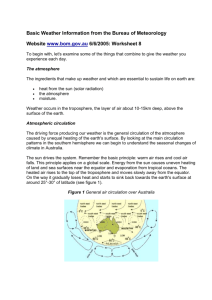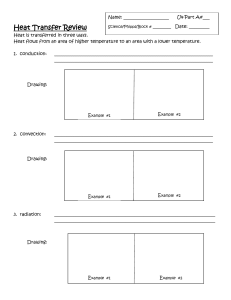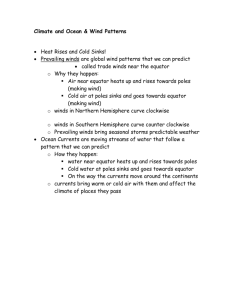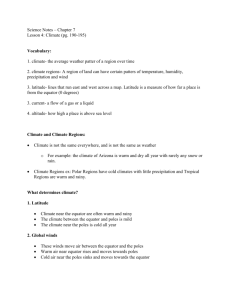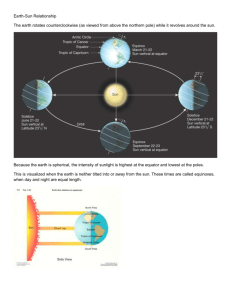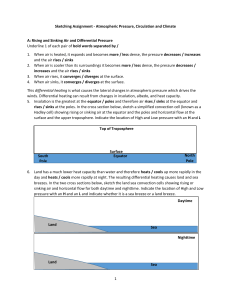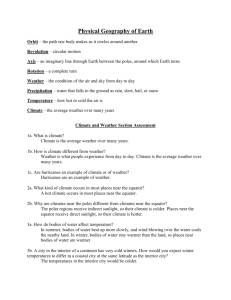Air Circulation Notes
advertisement
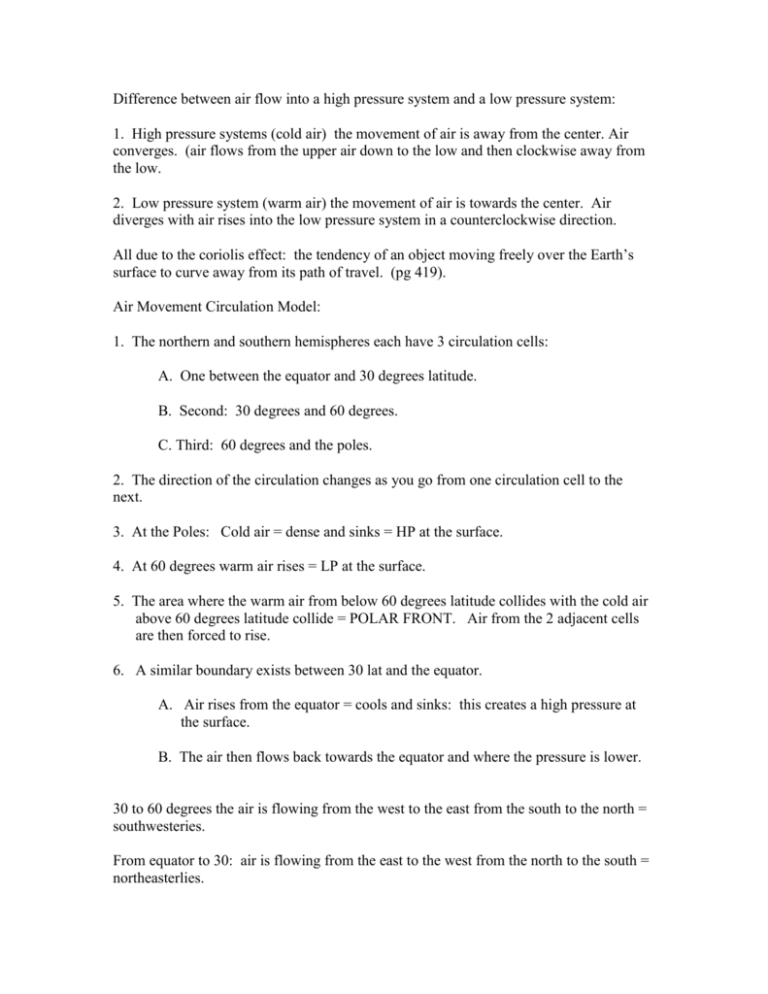
Difference between air flow into a high pressure system and a low pressure system: 1. High pressure systems (cold air) the movement of air is away from the center. Air converges. (air flows from the upper air down to the low and then clockwise away from the low. 2. Low pressure system (warm air) the movement of air is towards the center. Air diverges with air rises into the low pressure system in a counterclockwise direction. All due to the coriolis effect: the tendency of an object moving freely over the Earth’s surface to curve away from its path of travel. (pg 419). Air Movement Circulation Model: 1. The northern and southern hemispheres each have 3 circulation cells: A. One between the equator and 30 degrees latitude. B. Second: 30 degrees and 60 degrees. C. Third: 60 degrees and the poles. 2. The direction of the circulation changes as you go from one circulation cell to the next. 3. At the Poles: Cold air = dense and sinks = HP at the surface. 4. At 60 degrees warm air rises = LP at the surface. 5. The area where the warm air from below 60 degrees latitude collides with the cold air above 60 degrees latitude collide = POLAR FRONT. Air from the 2 adjacent cells are then forced to rise. 6. A similar boundary exists between 30 lat and the equator. A. Air rises from the equator = cools and sinks: this creates a high pressure at the surface. B. The air then flows back towards the equator and where the pressure is lower. 30 to 60 degrees the air is flowing from the west to the east from the south to the north = southwesteries. From equator to 30: air is flowing from the east to the west from the north to the south = northeasterlies. Pole: Northeasterlies Opposite in the southern hemisphere. All of this is due to the coriolis effect – because the earth rotates nothing goes directy straight.

